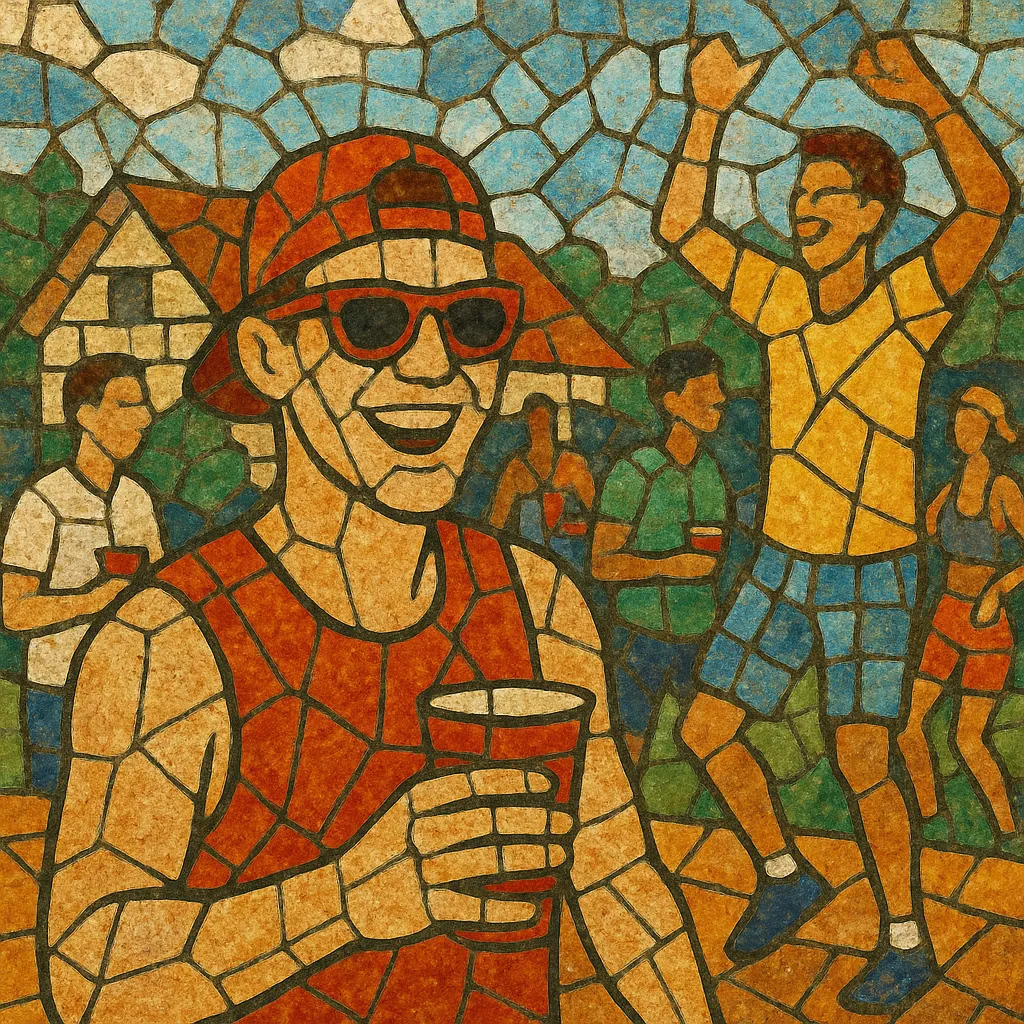Frat rap is a pop-leaning strand of hip hop that centers on college life, parties, tailgates, and carefree youth culture. It features approachable flows, chantable hooks, and bright, radio-friendly production built for house parties and campus shows.
Musically, it blends contemporary hip hop with dance-pop and EDM sheen: crisp drums, bouncy synth bass, catchy toplines, and big, singable choruses. Lyrically, it tends toward humorous braggadocio, weekend escapism, and coming-of-age snapshots, often delivered with a wink and a melodic, upbeat cadence.
The sound coalesced in the late 2000s blog/mixtape era and found its commercial footing in the early 2010s as artists toured college circuits, leveraged YouTube and Hype Machine, and crossed over to pop charts with feel-good anthems.
Frat rap took shape in the late 2000s United States as the blog/mixtape ecosystem (DatPiff, Hype Machine, early YouTube) made it easy for campus-based rappers to build audiences. While party-forward rap existed long before, the term "frat rap" came to describe a specifically college-centric, pop-facing take on hip hop that foregrounded weekend escapism, humor, and singalong hooks.
The breakout moment arrived with Asher Roth’s 2009 hit “I Love College,” which crystallized the aesthetic and audience. Around the same time and into the early 2010s, acts like Sammy Adams, Chiddy Bang, Hoodie Allen, Mike (then Mike Stud), and others moved from campus shows to national tours, propelled by social media virality and festival-friendly production that borrowed from EDM and dance-pop. Big, melodic choruses and clean, approachable flows helped these artists land on pop charts and in college playlists.
The sound was marked by upbeat tempos, bright synths, and chantable refrains, with lyrics about parties, friendships, and youthful confidence. Critics sometimes used “frat rap” pejoratively—associating it with bro culture—while fans embraced its breezy accessibility and live energy. Some artists initially tagged as frat rap (e.g., Mac Miller) later broadened their palettes and moved into more diverse or introspective territories.
By the mid‑2010s, trap sonics and streaming-era micro-scenes shifted mainstream hip hop’s center of gravity. Many frat-rap acts evolved toward pop, alternative hip hop, or EDM-rap crossovers, while the genre’s emphasis on big hooks, tourable party sets, and internet-first rollout strategies influenced how later artists fused rap with festival-ready production. Its legacy persists in campus circuits and upbeat pop-rap hybrids built for communal singalongs.


